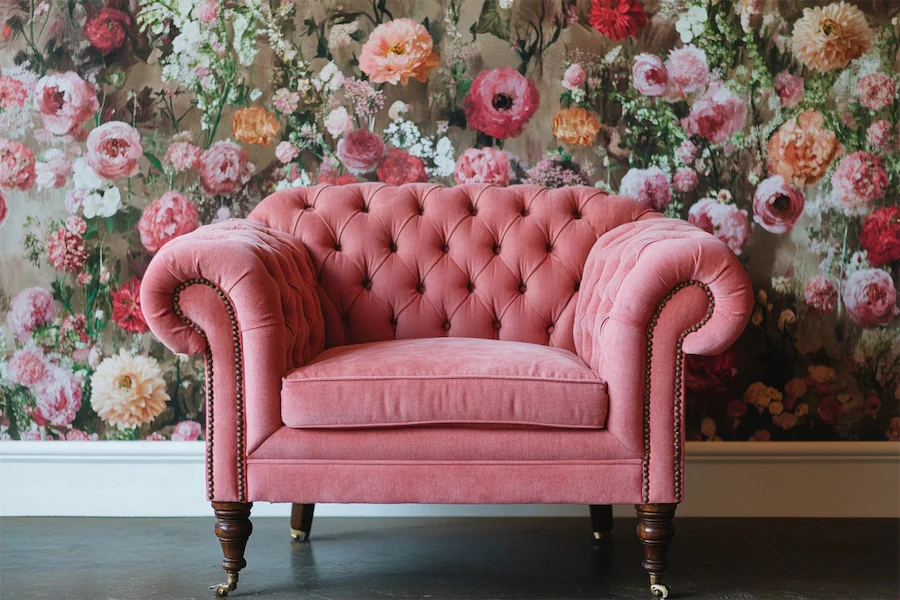A tufted chair is an upholstered seating piece distinguished by its characteristic tufting—a technique where the fabric or leather is pulled deep into the cushioning and secured with buttons or stitches, creating a patterned effect of depressions and elevations.
History and Origins of Tufted Chairs
The tufting technique gained prominence during the Victorian era in England, coinciding with the advent of coiled springs and the desire for more plush furniture. Tufting was initially employed to hold the stuffing, often horsehair, in place, ensuring durability and comfort.
Over time, tufted furniture became synonymous with luxury and elegance, with iconic pieces like the Chesterfield sofa epitomizing this style. The method has since been adapted across various design movements, including Art Deco and Mid-Century Modern, each incorporating tufting to suit their aesthetic principles.
Key Features of Tufted Chairs
- Tufting Patterns: Common patterns include diamond, button, and channel tufting, each offering a distinct visual texture.
- Upholstery Materials: Traditionally upholstered in leather or velvet, modern tufted chairs also feature fabrics like linen and synthetic blends.
- Frame Construction: Often built with sturdy wooden frames to support the tension created by the tufting process.
- Comfort and Durability: Tufting not only enhances aesthetic appeal but also helps maintain the shape and structure of the chair over time.
Applications of Tufted Chairs
- Living Rooms: Serve as statement pieces, adding a touch of sophistication and comfort.
- Bedrooms: Tufted accent chairs or benches provide elegance and functionality.
- Offices and Studies: Tufted chairs convey professionalism and timeless style.
- Dining Areas: Tufted dining chairs offer a blend of comfort and luxury, suitable for both formal and casual settings.
Considerations When Choosing a Tufted Chair
- Design Compatibility: Ensure the tufting style aligns with your existing décor, whether traditional or contemporary.
- Upholstery Material: Select a fabric that meets your aesthetic preferences and practical needs, considering factors like durability and maintenance.
- Comfort Level: Test the chair for comfort, as tufting can affect the firmness of the seating surface.
- Quality of Construction: Look for well-crafted tufting and sturdy frame construction to ensure longevity.
Conclusion
Tufted chairs combine historical craftsmanship with versatile design, making them suitable for various interior styles. By understanding their origins, features, and applications, you can select a tufted chair that enhances both the comfort and elegance of your space.
